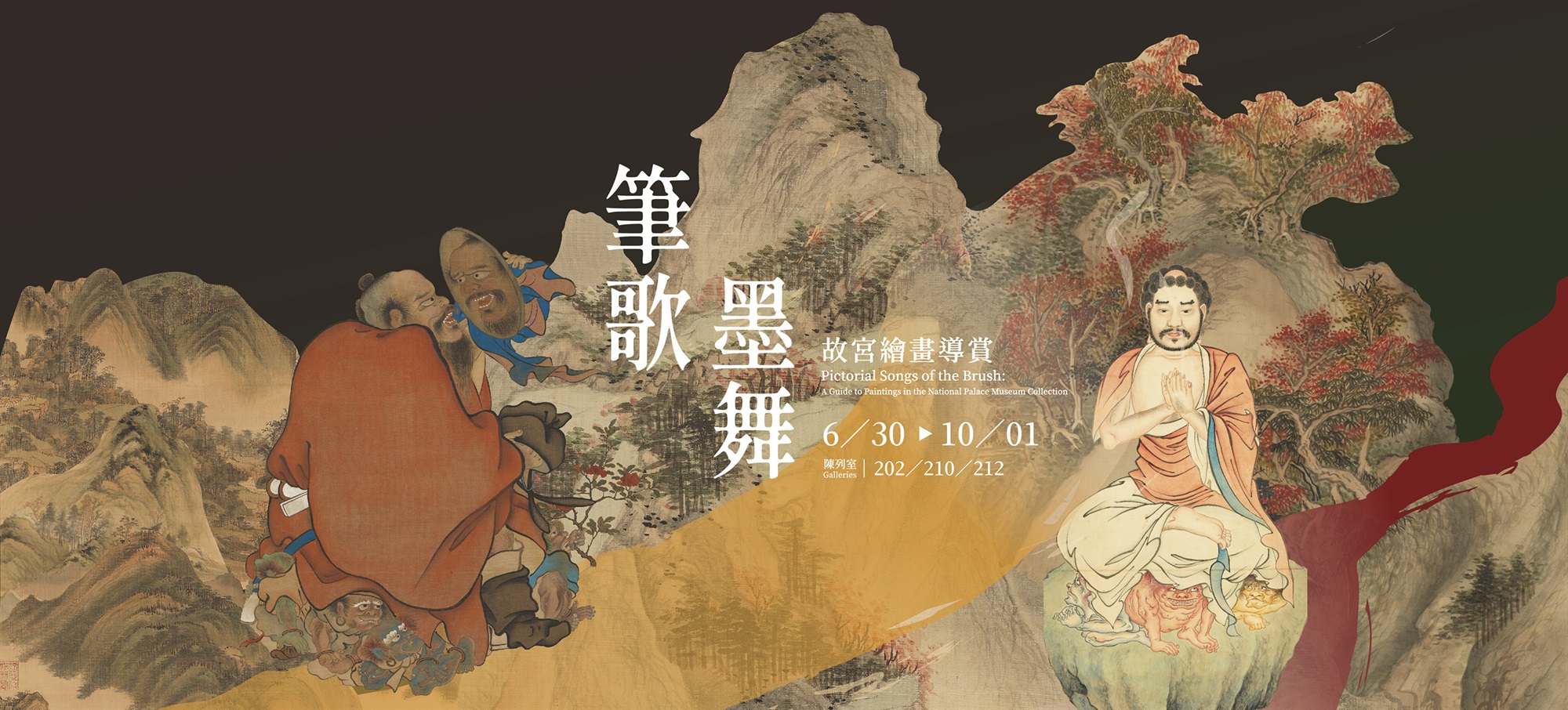Figure Painting: Deities and Spirits
Figure paintings seek to convey the spirit, dynamics, and likeness of the subject. Among them, those depicting Buddhist or Daoist figures and other deities or spirits have been popular starting from the Six Dynasties period, when famous masters of such appeared. The majesty of Buddhist and Daoist images have didactic meaning, while depictions of deities and spirits reveal the transformative world of the normally unseen, allowing for freedom of expression on the part of the artist. These works include deities and spirits, stately and detailed depictions of Buddhist figures in fine brushwork, immortals done in bold strokes of the brush, poignant narrative stories, and Zhong Kui, the demon queller. He is often shown surrounded by demons, who appear in supernatural forms not only grotesque but also with vivid and lively expressions, the fear they inspire also tempered by a touch of whimsy and humor.
-
Zhong Kui in a Wintry Grove Wen Zhengming (1470-1559), Ming dynasty
Wen Zhengming was gifted at the arts of prose and poetry, calligraphy, and painting, becoming known as one of the Four Ming Masters.
It is said that wintry forests are often haunted by demons, spirits, monsters, and other ominous creatures, which is why Zhong Kui, the demon-queller, is most needed there. However, the Zhong Kui painted by such Ming literati artists as Wen Zhengming and Qian Gu (1508-after 1578) show him mostly with an official’s tablet instead of a sword, turning him into a “scholarly Zhong Kui,” as seen in this painting. The brushwork for the figure is exceptionally fine and upright, the Zhong Kui painted with a nobler and refined spirit. The trees, though, were rendered with flicks of the brush and complemented by light washes of ink to suggest hazy mist that convincingly conveys the chilly atmosphere of a winter’s day. Although Wen Zhengming wrote that it was done on Lunar New Year’s Eve “in play,” it is actually one of his finest surviving figure paintings.
-
Goddess of the Luo River Attributed to Gu Kaizhi (ca. 345-406), Jin dynasty
The Goddess of the Luo River, known as Concubine Mi, was the daughter of the legendary ruler Fuxi. One day she lost her footing by the Luo River, fell in, and drowned, upon which the Heavenly Emperor ennobled her as Goddess of the Luo River. She subsequently became the object of amorous descriptions by literati, the most famous being “Ode to the Goddess of the Luo River” by Cao Zhi (192-232) of the Wei in the Three Kingdoms period.
This work depicts Concubine Mi riding a cloud chariot drawn by six dragons. Banners flutter in a scene of water and air as “Striped fish leap up to greet her carriage, jade chimes ring as they depart.” The background was washed with ocher, to which washes of gamboges and ink were added to make it darker. The figures, dragons, and fish, however, retain the original color of the silk, making them stand out in detail. The method preserves the archaic quality of early landscape painting, and this work bears an old attribution to Gu Kaizhi, though it is actually a copy by a later artist.
-
Goddess of the Luo River Wei Jiuding (ca. 14th c.), Yuan dynasty
Wei Jiuding was an excellent painter of landscapes and figures specializing as well in ruled-line painting.
The Goddess of the Luo River was immortalized as the epitome of classical female beauty in “Ode to the Goddess of the Luo River” by the Wei poet Cao Zhi (192-232) of the Three Kingdoms period. An inscription by Ni Zan (1301-1374) of the Yuan dynasty here reads, “Inscribed on Wei Mingxuan’s (Jiuding) ‘Goddess of the Luo River.’” The painter used pliant yet strong and fluid brushwork with pure and light ink tones to render the Goddess of the Luo River standing gently on clouds in the method of monochrome ink known as “baimiao.” She hovers over the rippling surface of the river, the end of one of her robes fluttering gently in the breeze like a dragon twisting and ascending to the heavens. The elegance and grace here exhibits the spirit and extraordinary beauty of the Goddess of the Luo River.


